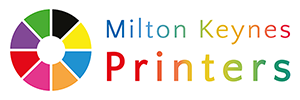Blog
Variable printing and the psychology behind personalising adverts
In the past it has been difficult to personalise mail for clients. This is because it takes a lot of work to print a separate documents for each name and address.
Variable printing is by no means a new process, it has grown in frequency as advancements in printing technology have lowered the cost. It can allow you to uniquely customize your media by changing certain elements from piece to piece, taking advantage of the power of complex personalisation.
There are many methods of variable personalisation – postcards with the name of the recipient, or how about unique coupons with individual serial numbers so that you can track which customers used them. Other suggestions include creating a series of assorted business cards, each with a different photo background.
Complex personalisation has also moved onto digital platforms such as email and web content. Plenty of services use HTML coding techniques to adapt their emails to suit you.
You must be familiar with the email that reads hello [enter name here]. How many of us believe they actually know our names? Why do these companies choose to make the impersonal seem personal?
Psychologists say it boils down to our own social needs. Media and marketing whizzes know that we all like to feel welcomed, honoured and important. This allows the companies do just that, by giving the impression that they are familiar with you, and know you too well. Such as we feel welcomed, we feel more connected with the company and appreciate the time taken to register us as a person.
Using print to revolutionise the future of media marketing
Artistic technology develops day by day, the way we do business is constantly changing.
Once upon a time, there may have been a period where print was considered a dead medium.
Beyond that – the eco-friendly warriors have been waging a war on paper for decades – almost half a century ago, back in the 70’s and 80’s.
On the flip side online marketing has soared and is now the wave of the future. The physical and material aspect of the print industry is however far from dead. It continues to grow and evolve alongside the upsurge of new technology
We can use printing to revolutionise the future of our marketing by pursuing new creative ways to manage our promotional material.
One way is to use 3D printing to design and build miniature creations that promote your goal or message. Alleviate the use of paper to please the tree-huggers. Find new ways to demonstrate your company
Inside The Printing World

A Short History of Printing
The history of what we know as the printing press goes back as far as around c.1440.
Back in the 15th Century there was no such thing as a digital printer. We have developed new techniques through the ages using a variety of techniques and adaptable technology.
The earliest printing technique began in China back during the Han Dynasty – roughly 220 A.D. They used woodblocks to recreate words and art. It was such a vital component during this totally dynamic time for China.
During this time printing using blocks spread to Korea and Japan – they also used Chinese logograms. The technique was also used in Turpan and Vietnam using a number of other scripts. It then spread to Persia and Russia and was transmitted to Europe via the Islamic world. By around 1400 blocks were being used on paper for old master prints and playing cards.
The technology of printing was so vital during the development of the Renaissance period and the scientific revolution because it laid the material basis for us to be able to share knowledge. This made way for our now very modern knowledge-based economy. It helped the spread of learning to the general public.
CMK to CMYK
Printing through the ages. We have gone from the old cylinder seal, through to wooden blocks, Korean moveable types, lithograph press and last but not in the very least, least, the 3D Digital Printer.
Fast forward just over 600 years. We are still producing master prints and playing cards but we have had to move away. We are now in the age of digital printing. There are more computers than ever and we have more and more technology at our fingertips.
Where will the future take us?
